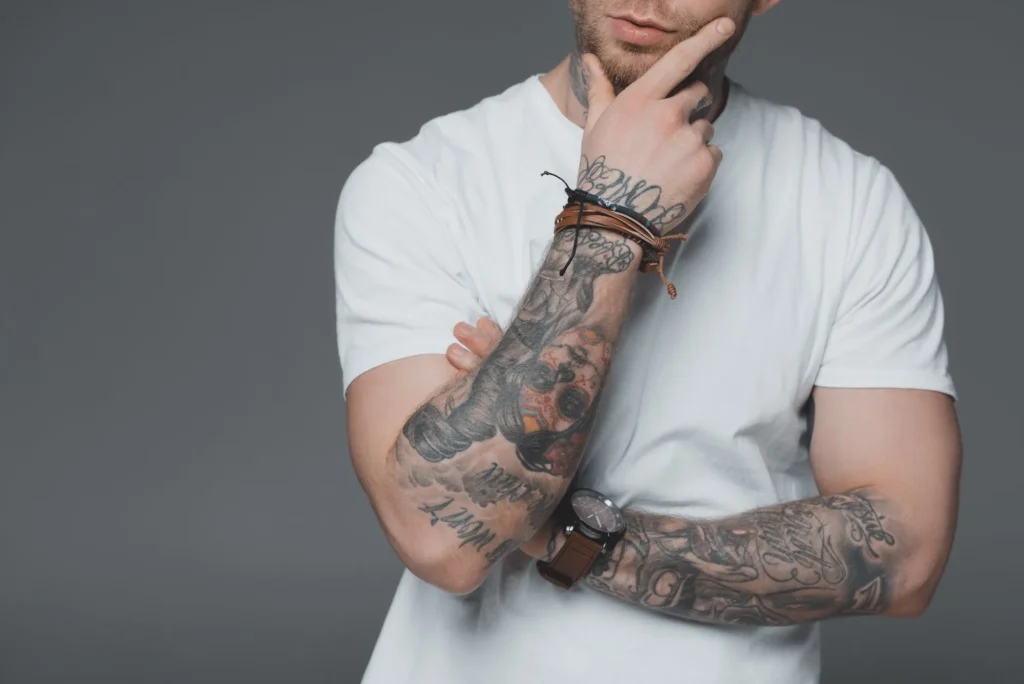In the world of body art, trends come and go, but some styles manage to leave a lasting impression. One such trend taking the tattoo industry by storm is the rise of fine line tattoos. Known for their delicate appearance, intricate designs, and minimalist aesthetic, fine line tattoos have captured the hearts (and skin) of people across the globe. Whether you’re a tattoo veteran or considering your first ink, here’s everything you should know about this increasingly popular style.

What Are Fine Line Tattoos?
Fine line tattoos are exactly what they sound like—tattoos made up of extremely thin lines. These designs usually feature minimal shading, focusing instead on precision and detail. Artists use single-needle or small cluster needles to create these light, hair-thin lines. The result? A clean, crisp image that looks subtle, elegant, and often almost like a sketch on the skin.
Common subjects for fine line tattoos include:
- Florals and botanicals
- Abstract and geometric patterns
- Minimalist symbols and text
- Portraits and animals
- Celestial elements like stars and moons
The beauty of this style lies in its versatility—it can be both subtle and deeply expressive at the same time.
Why Are Fine Line Tattoos So Popular?
There are several reasons behind the meteoric rise of fine line tattoos. Social media, especially platforms like Instagram and Pinterest, have played a huge role. Celebrities and influencers have also embraced the trend, sporting small, dainty tattoos that look chic and stylish in photos.
Here are a few key factors contributing to the popularity:
1. Aesthetic Appeal
Fine line tattoos offer a minimalist elegance that appeals to many people who prefer subtle body art. They often resemble fine pen drawings, giving them a sophisticated and timeless feel.
2. Less Commitment in Size
Smaller designs are less intimidating for first-timers. People who want to express themselves through ink but aren’t ready for large or bold pieces often gravitate toward fine line work.
3. Professional and Discreet
Because they’re subtle and often small, fine line tattoos are easy to hide if needed. This makes them more acceptable in professional settings or for people with conservative family environments.
4. Faster Healing Time
Since these tattoos usually involve less shading and trauma to the skin, they may heal faster and with less scabbing compared to heavier traditional styles.

The Technique Behind the Ink
Fine line tattoos require a high level of precision and control. Tattoo artists often use a single-needle technique or a very small configuration (such as a 3RL—3 round liner). This allows for extremely thin lines and intricate detail that would be difficult to achieve with traditional tattoo needles.
It’s important to note that not every tattoo artist specializes in fine line work. This style demands a steady hand, deep understanding of skin and ink, and a unique artistic approach. Always look for an experienced artist with a solid portfolio of fine line designs before booking your appointment.
Are Fine Line Tattoos Permanent?
Yes, fine line tattoos are permanent—but with a caveat. Because they use less ink and sit closer to the surface of the skin, they may fade faster than bold, traditional tattoos. Over time, thin lines can blur or fade, especially if the tattoo is exposed to sunlight or isn’t properly cared for.
Placement also matters. Tattoos on fingers, wrists, and feet—places that experience more friction—are more likely to blur or fade faster. That’s why aftercare and touch-ups are particularly important for fine line designs.
Pain Levels: Are They More Bearable?
Pain tolerance varies from person to person, but fine line tattoos are often reported to be less painful than traditional tattoos. Since the needlework is lighter and doesn’t require deep shading, many people describe the sensation as more tolerable.
That said, pain also depends on the placement of the tattoo. Areas with thinner skin and more nerve endings (like ribs, fingers, or behind the ears) will always be more sensitive regardless of the style.
Things to Consider Before Getting One
Before you jump on the fine line trend, here are a few important things to keep in mind:
1. Do Your Research
Not all tattoo artists are skilled in fine line work. Look at portfolios, check reviews, and even consider visiting studios in person to consult with the artist. Ask about their experience with single-needle tattoos and how they ensure longevity in their designs.
2. Aftercare is Key
Follow your artist’s aftercare instructions to the letter. Keep the tattoo clean, moisturized, and protected from direct sunlight. Avoid swimming, heavy exercise, or tight clothing that could rub against the area during the healing period.
3. Expect a Touch-Up
Because fine lines are delicate, a touch-up may be necessary after the tattoo heals. Some fading or blurring is normal, and many artists offer free or low-cost touch-ups for this very reason.
4. Know What You Want
Due to the intricate and delicate nature of fine line tattoos, clarity of design is crucial. Think about your tattoo’s meaning, placement, and size. Bring reference photos and be open to your artist’s advice on what will work best for your skin and lifestyle.
Future Trends in Fine Line Work
As fine line tattoos continue to grow in popularity, artists are pushing the boundaries with more complex and creative designs. Some emerging trends include:
- Micro-realism: Hyper-detailed portraits and scenes in tiny form
- Gradient line work: Using varying line weights for a 3D effect
- Textural tattoos: Mimicking textures like lace, fabric, or woodgrain
- Mixed styles: Combining fine lines with watercolor or dotwork
These innovations are elevating fine line tattoos from a simple style to a sophisticated art form.
Final Thoughts
Fine line tattoos are more than just a trend—they’re a testament to how tattoos can be delicate, meaningful, and artfully minimalist. Whether you’re getting your first tattoo or adding to a growing collection, fine line work offers a stylish, subtle way to express yourself.
But remember, while the lines may be fine, the decision to get a tattoo is not. Choose your artist wisely, care for your ink diligently, and wear your art proudly.
